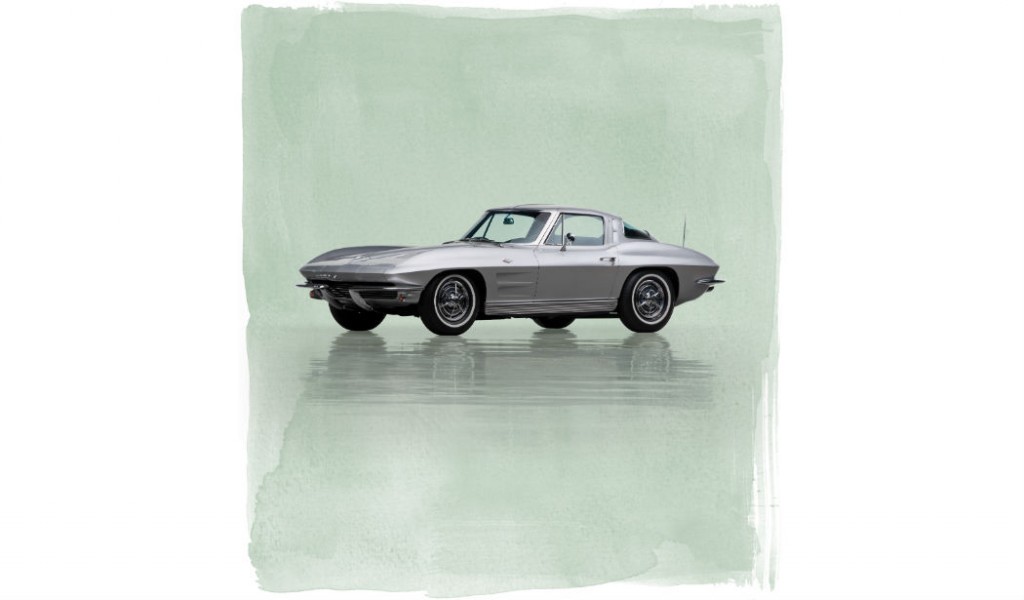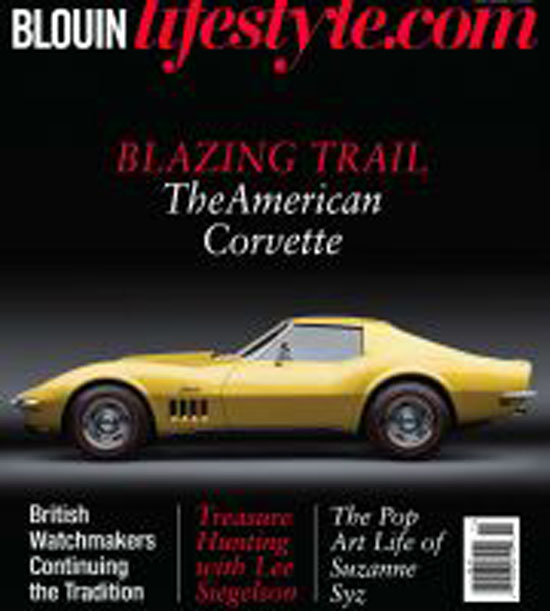
by Nicholas Forrest as republished from blouinartinfo.com
Since the first Corvette rolled off the production line in 1953,
the all-American sports car has become one of the most iconic
automobiles of all time
Dateline November 2015: Testament to the allure of the Corvette is the $800,000 paid for the first production Chevrolet Corvette Z06 convertible at Barrett-Jackson’s Scottsdale, Arizona auction in January. The car was sent to auction by Chevrolet parent company General Motors, which has a history of auctioning the first production models of its most desirable cars to support different charities, in this case, United Way.
The 2016 Z06 convertible was bought by Corvette enthusiast Rick Hendrick, founder of the Hendrick Automotive Group, current owner of the Hendrick Motorsports NASCAR team. Hendrick also owns the first 2014 Corvette Stingray coupe, the first 2014 Corvette Stingray Convertible, and the first 2015 Corvette Z06, all of which he bought at similar auctions.

This story from From the November Edition of Blouin Lifestyle Magazine
The first production models of the brand new Corvettes bought by Hendrick at auction are destined to be the classic Corvettes of the future. But in the current market it’s the classics of the 1950s and 60s that attract the highest prices.
The auction record for a Corvette was set at Barrett-Jackson’s 2014 Scottsdale auction when one of the 20 Corvette L88’s produced in 1967 was sold for US$3.85 million, beating the previous record of $3.42 million set by another 1967 L88 at a Mecum auction the same year.
According to the auction house, the true intent of the L88, a special order high performance option package, was “all-out performance on the racetrack.” In August this year, Rick Cole auctions sold a stunning 1969 model L88, one of 116 built, for $610,000. Resplendent in gold and with only 2,576 miles (4,145 km) on it, the sports car was described as “the finest unrestored 1969 Corvette L88 coupe which can be acquired, and quite likely the lowest mileage L88 Corvette in existence.”
The year 1963 was a landmark for Corvette. Not only did the marque introduce a dramatic new design, known as the Stingray, it also offered a coupe version for the first time. Bonhams sold a 1963 version of the iconic split-window Fuelie — a colloquial reference to fuel injected Corvettes from the 1950s and 1960s — at its August 2015 Quail Lodge auction. The car, which had been part of the Tony Hart Collection and had only 27,621 miles on the clock, sold for $209,000. According to RM Sotheby’s, the Corvettes that took to the race track in the 1950s and 1960s are the most cherished and desirable. Earlier this year, in May, RM Sotheby’s sold the iconic 1962 Chevrolet Corvette Gulf Oil Race Car for $1.65 million. Gord Duff, car specialist at the auction house says that in the past year they have witnessed once-discarded Corvette race cars of the 1960s realizing prices comparable to some of the great Italian race car manufacturers, which he says “bodes well for the American marque.”
Duff says that one of the greatest changes in the Corvette auction market has been the importance of documentation. He explains that as prices for top tier cars increase, collectors are becoming more and more educated and are looking to ensure the authenticity of their potential purchases. “A significant portion of a car’s value lies not only in its original equipment, but in its original paperwork and documentation. The range in values for examples that are ‘just a car’ and those that are fully documented from new, is growing larger and larger,” says Duff. “Top prices are achieved by cars with original equipment and drive train, nut-andbolt restorations, NCRS award documentation, and the paperwork to back it all up. This is what discerning collectors are chasing and will pay a premium to obtain.”
According to Craig Jackson, chairman and CEO of BarrettJackson, Corvette buyers are more educated these days and blue chip cars with strong documentation are selling well, even seeing record highs. “I look at the C2 Corvettes, specifically the 1963 split window and the 1967 big blocks being trendsetters,” says Jackson, adding that “mid-year (1963 to 1967) Corvettes continue to dominate the market.”He says that “whether it be a ’67 with a 427 tri-power, a well done 1966 custom roadster, or a nice ’63 split window, those cars really appeal to the baby boomers who were too young or too cash-strapped to have one as a kid.”
Eric Minoff, specialist in the Motoring Department at Bonhams in New York, says that the Corvette market has remained relatively level overall but points out, “there has been greater enthusiasm of late for the ’63 split window coupes and the examples with particularly impressive mechanical specifications (fuel injection, L88 motors, etc.).” He adds, “It isn’t quite the muscle car boom of the early 2000s, nor have Corvettes ramped up in price like post-WWII European sports cars, but they have held their own.” John Kraman, consignment director for Mecum, identifies the optional fuel injected 1957-1965 and all 1963 split window coupes as the Corvettes that are all the rage right now, adding that the 1967 big blocks are also strong as they represent the pinnacle of Corvette street performance that peaked in the 1960s. He points to the stellar 1995 ZR1 versions as being quite undervalued but poised to increase. “The performance package doubled the cost new of a base Corvette with many sold over sticker.Today they may be bought for only a small premium over a base car” he explains. “That will change in the future as a new generation of buyers seek out prime examples.”
A 1993 ZR1 was one of eight cars swallowed by a sinkhole that opened up at the National Corvette Museum in Bowling Green Kentucky in February 2014. However, the most significant of the cars that fell victim to the 60-foot-long, 40-foot-wide, 30-foot-deep crater was the 1,000,000th Corvette, a 1992 C4 convertible with a red interior and white exterior, just like the very first Corvette produced in 1953. GM restored the historically significant car at their Technical Center campus in Warren, Michigan, a task that took approximately 30 craftspeople and designers four months and 1,200 man-hours to complete.
Restorers discovered that each employee involved in building it had signed a part of the car, reinforcing its importance, and each signature was saved during the restoration. The immaculately restored C4 was unveiled on September 3, 2015 at the renovated National Corvette Museum, and it is now once again part of the permanent exhibit as an example of a remarkable car that had the power to evoke excitement and devotion even in the workers who were assigned the responsibility of bringing each Corvette to life.
